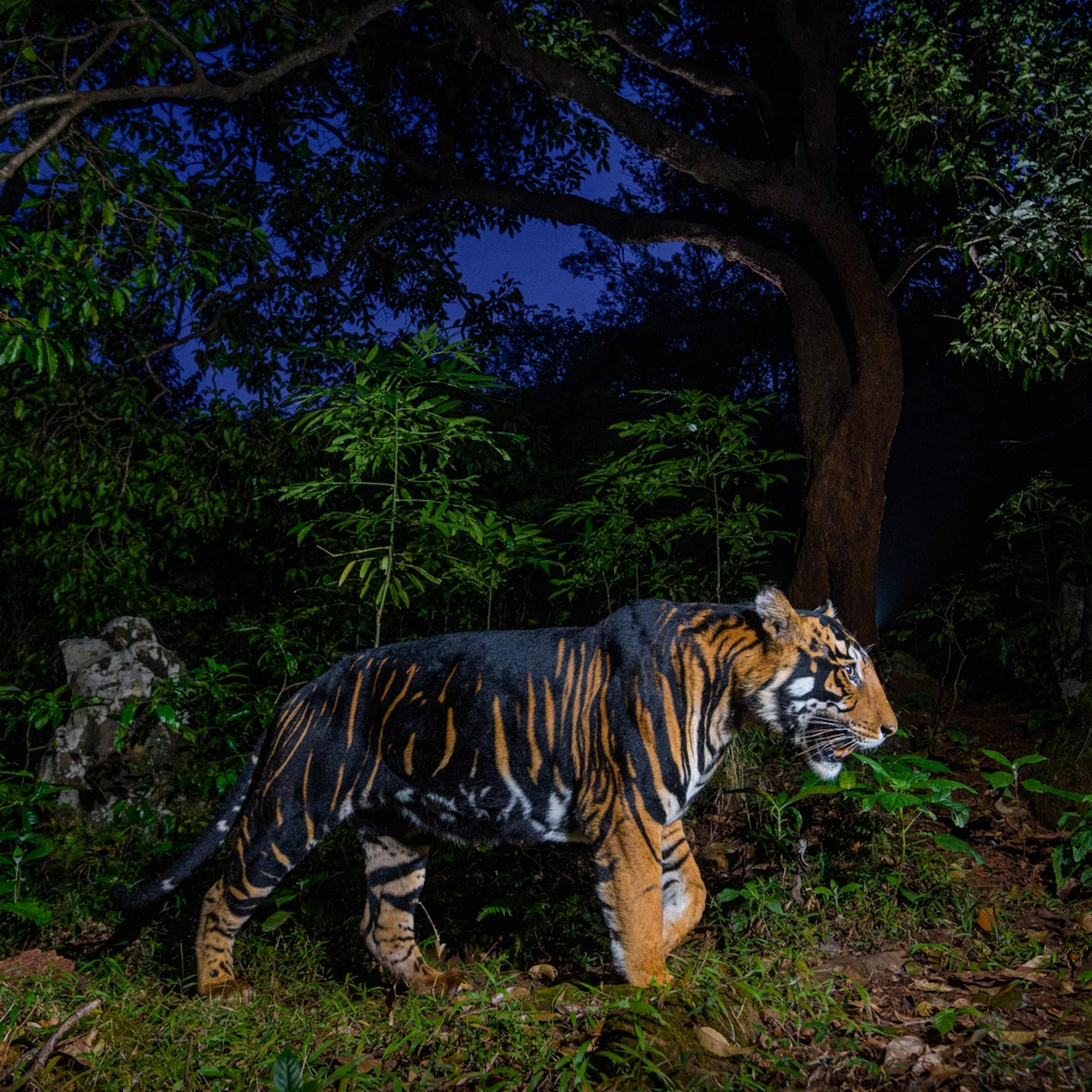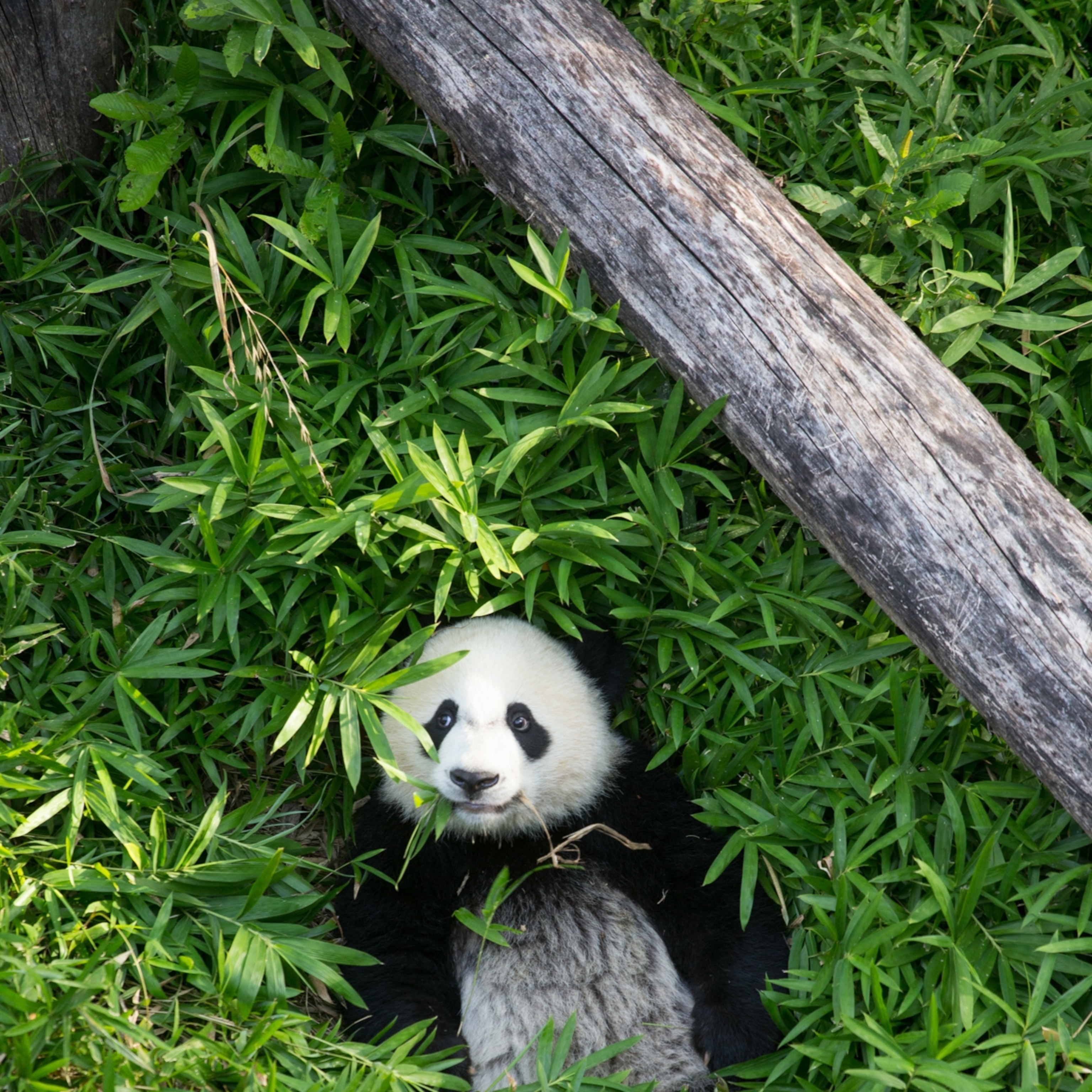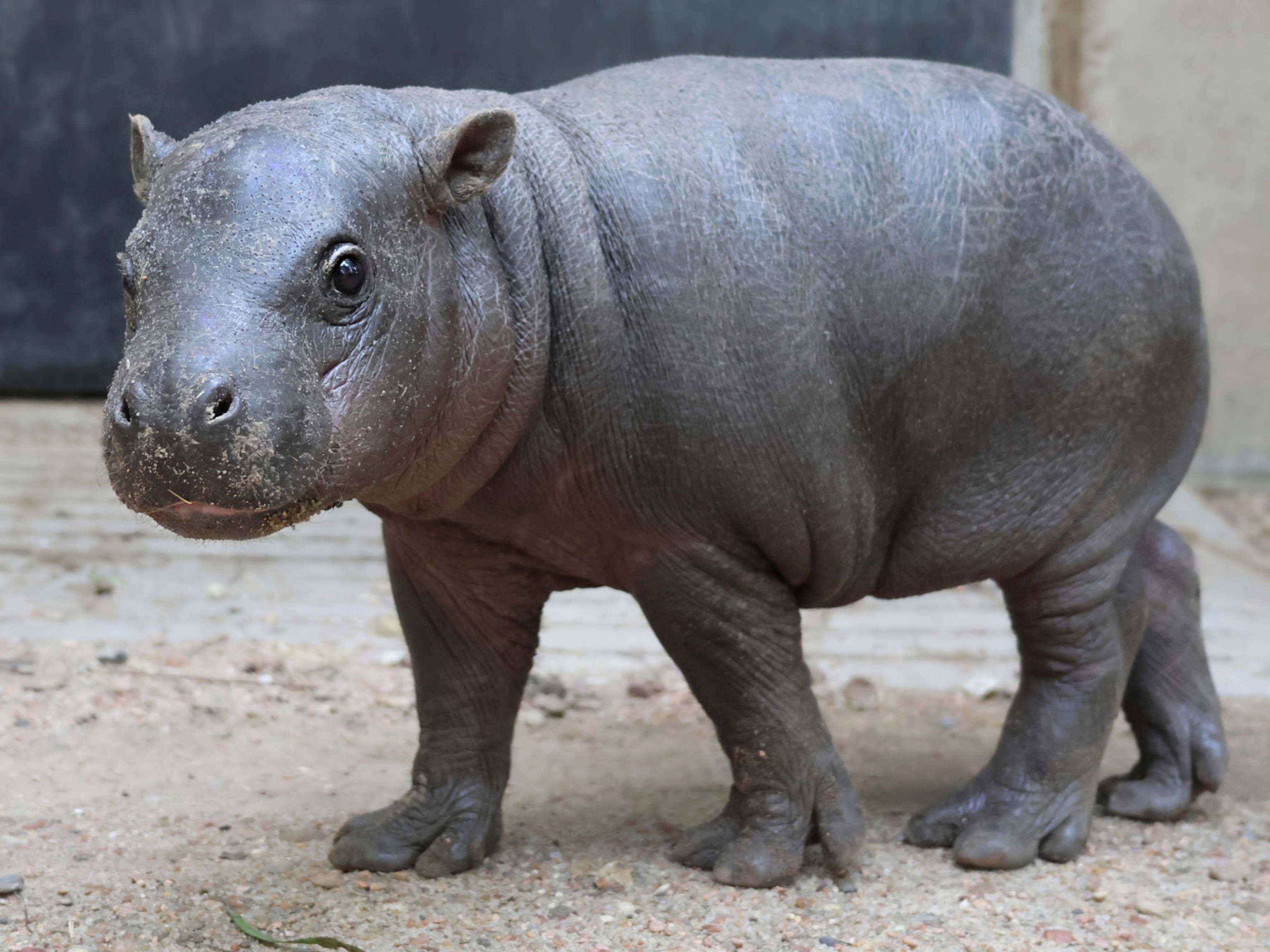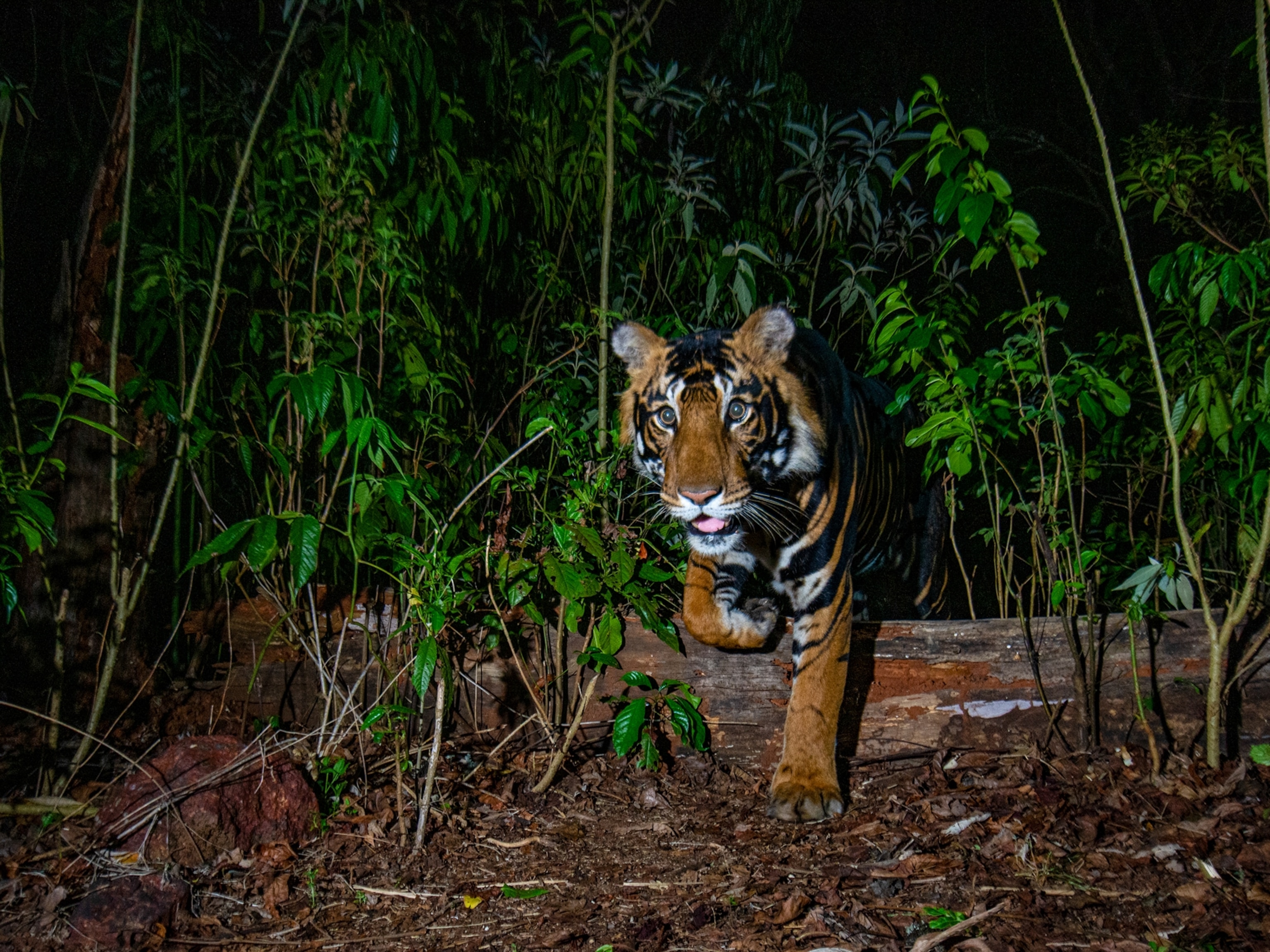
Months After Raid on Infamous Tiger Temple, Plans for Offshoot Zoo Forge Ahead
Last year the government seized the monastery’s tigers. Now a new zoo that could house up to 500 tigers is nearing completion.
A flurry of construction is underway on land just outside Thailand’s infamous Tiger Temple, a monastery formally known as Wat Pa Luangta Bua Yannasampanno that doubled as a popular tiger tourism venue until last year. Allegations of wildlife trafficking prompted a raid by wildlife officials, who confiscated 137 tigers and moved them to safety in government facilities. At the time they found a huge cache of tiger parts and products on the temple grounds. An investigation is ongoing.
The abbot, Phra Acham Phoosit (Chan) Kanthitharo, and temple spokesmen have repeatedly denied any impropriety.
Now a temple offshoot business venture is building animal enclosures next door to the monastery—to house tigers in a new zoo.
Although the Tiger Temple isn’t legally connected to this venture, the monks advertise the “New Home for Tigers Project” on their website as “in process.” The cost of the 10-acre zoo complex is estimated at $3.4 million.
In anticipation of the zoo’s completion and the arrival of tigers, a high-volume Thai travel company, Thailand Tourist Center, is taking deposits for tours starting in March, according to manager Tony Clark. One option is a $300 “breakfast with monks and tigers” that includes bottle-feeding cubs.
In April 2016 Thailand’s Department of National Parks, Wildlife and Plant Conservation issued the Tiger Temple Co. Ltd. a license for what temple officials described as a “safari-style” tiger attraction. In December the company requested approval to buy 105 tigers from the Mali-Salika Zoo in central Thailand, which had filed papers to shut down. It’s a zoo in name only: It breeds tigers but has never admitted tourists.
The wildlife department hasn’t authorized the purchase because the animal enclosures weren’t yet finished. If and when Mali-Salika closes its doors, the new zoo has a strong bargaining chip, says Edwin Wiek, founder of the Wildlife Friends Foundation Thailand, a wild animal rescue center based in Phet Buri. If approval is eventually denied, “the government has to take in these tigers, and they can’t,” he says, because existing facilities are full. He notes that by offering to take the tigers, the company is painting itself as their “rescuer.”
Earlier this month, in a move that may be intended to distance the zoo venture from the recent Tiger Temple scandals, the company took a new name. "According to our sources the Tiger Temple Co. Ltd changed its name to Golden Tiger (Thailand) Co. Ltd. on February 3, 2017," says Jan Schmidt-Burbach, a senior wildlife advisor with World Animal Protection, a nonprofit that works to phase out the use of wild animals for entertainment globally. The wildlife department confirmed the name change.
GOINGS-ON AT THE TIGER TEMPLE
The monastery’s history with tigers dates back to 1999 when the first cub arrived. Soon tigers were being “speed-bred”—newborns taken from their mothers soon after birth so the females quickly produced another litter—to funnel cats into the venue’s pricey cub-petting attraction. This was done in violation of government orders that the temple neither breed nor make money from the tigers.

Tourists poured in to pet and feed cubs, walk tigers on leashes, and take selfies with the cats—earning the temple an estimated $3 million a year. By 2016 the monastery held 147 tigers.
Meanwhile allegations that the monks were illegally trading tigers were growing. Three male tigers disappeared in December 2014. This came to light because they’d been microchipped and registered with the government and were therefore traceable. It was discovered in April 2015 that the temple had 13 unregistered tigers; the three registered animals were grabbed by mistake, according to former temple advisor Gary Agnew.
Former staff and volunteers also detailed instances of missing adults and cubs, some of which were documented in a January 2016 report by the Australia-based conservation nonprofit Cee4Life and published as part of a larger investigation by National Geographic.
The wildlife department then seized 10 of the tigers, but when officers returned to confiscate the rest, they were refused entry. In May, armed with a court order, more than 500 officers raided the temple, seizing the 137 remaining tigers. They also made what they called a “gruesome” discovery: a freezer stacked with the carcasses of 40 cubs; 20 more cubs floating in jars of formaldehyde; tiger pelts; some 1,500 tiger skin amulets; and other wildlife products.
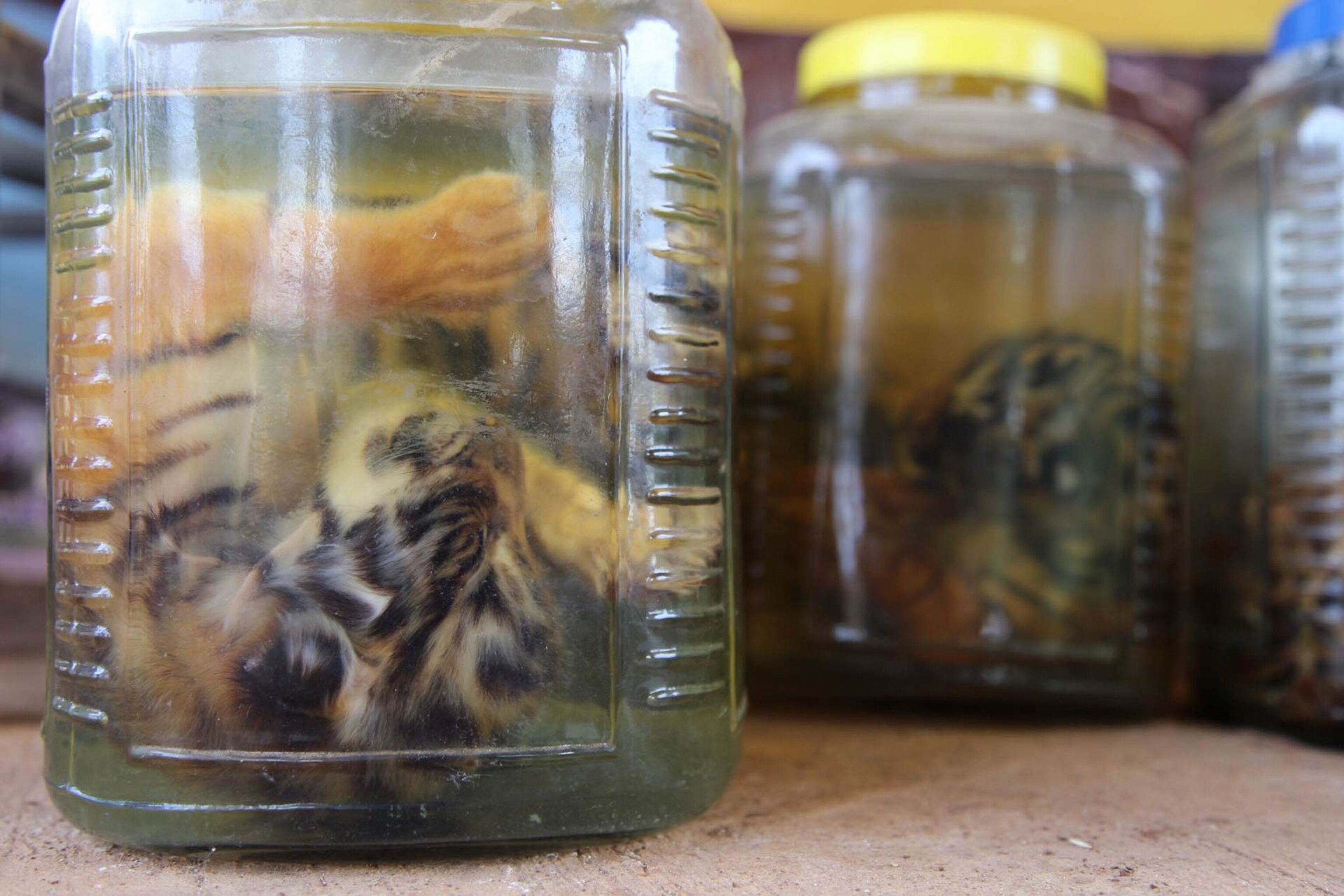
In December, DNA analysis of the frozen cubs revealed that six had no parents among the resident tigers and one more had no mother on site. That’s evidence of trafficking, says Kanita Ouithavon, who heads the wildlife department’s state-of-the-art forensics lab. It means that the cubs were either born outside the monastery or that their parents are gone. Ouithavon says it’s possible that further testing could show that other cubs were also unrelated to any resident tigers.
A GOLDEN TRADE
Tiger skins, bones, teeth, and claws are valuable items in a global illegal wildlife trade valued at some $19 billion a year by the United Nations Office on Drugs and Crime. Tigers are protected under both Thai law and an international treaty governing cross-border trade in endangered species. Only about 3,800 survive in the wild.
Thailand has some 2,500 tigers in more than 30 legal breeding facilities, including Sriracha Tiger Zoo and Tiger Kingdom, which has been described as the McDonalds of tiger tourism, with three locations and possibly more to come. China has at least 5,000 tigers in breeding farms.
“Tigers breed well in captivity,” says John Baker, managing director of the conservation NGO WildAid, who adds that “tigers and parts from commercial breeders across Southeast Asia regularly end up in the illegal international wildlife trade.” Two percent of traded tigers seized by authorities in 2000 came from captive sources; that rose to 30 percent in 2015, according to a report from TRAFFIC, a nonprofit that monitors illicit wildlife trade around the world.
China is by far the largest consumer of luxury tiger products, including tiger pelts (used in home décor) and tiger bone wine (made by soaking parts of a tiger’s skeleton in rice wine). While traditional Chinese medicine ascribed healing properties to nearly every part of a cat, tiger bone wine is now bought, gifted, and served to guests as a way to exhibit power and prestige. Some investors are hoarding tiger bone wine and skins, like gold bars, banking on a time when wild tigers are extinct.
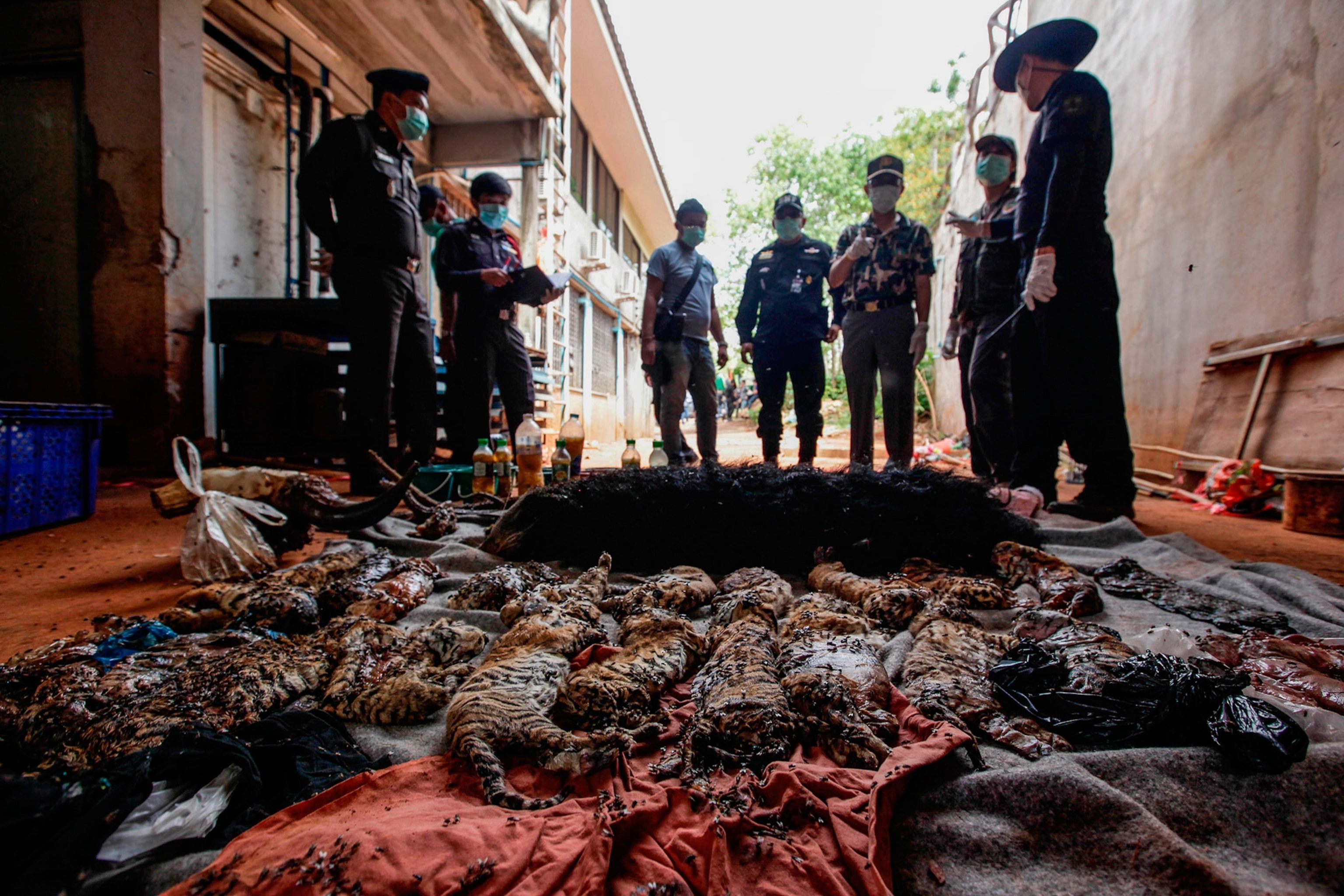
The sale of tiger products from captive-bred animals spurs greater demand—and poaching of wild tigers, says Grace Gabriel, Asia regional director of the International Fund for Animal Welfare. India, the last real stronghold of wild tigers, lost more to poachers in 2016—50, according to the Wildlife Protection Society of India—than at any time during the past 15 years.
WILL THE NEW ZOO BREED TIGERS?
In light of the monastery’s track record with tigers, wildlife advocates worry that the new zoo next door will breed the cats for the black market. “There’s a fear that tigers will vanish again,” says Sybelle Foxcroft, the founder of Cee4life and author of its report alleging abuse and wildlife trafficking from the Tiger Temple. “There’s no confidence that this new company will comply with laws protecting tigers.”
Last year Gary Agnew, the former Tiger Temple advisor, told National Geographic that the first phase of the new safari-style “sanctuary” would accommodate 500 tigers, that there would be hands-on contact with the cats and that they would be allowed to breed freely.
If the zoo intends to breed tigers legally, it must get a special permit from the wildlife department. According to Soontorn Chaiwaita, the acting director of the department’s conservation office, the company “has not applied for a breeding license. They shall not breed wild animals for commercial purposes.”

The company’s zoo license is valid through April 18, 2021. Under its terms, before the zoo can open, it must meet standards regulating the size and safety of enclosures, hire a resident veterinarian, and more. Once open, it must submit to periodic inspections. If violations aren’t addressed, the license can be suspended or revoked, Chaiwata says.
According to Chaiwata, there are now seven open legal cases relating to the Tiger Temple. “Most of [these] crimes [deal] with unauthorized possession of protected species or possession of protected species without a permit,” he wrote in an email. Jan Schmidt-Burbach, of World Animal Protection, says his organization’s sources suggest that “some of the company’s shareholders may be involved in [the] legal cases because of alleged illegal wildlife activities at the Tiger Temple last year.”
Golden Tiger (Thailand) Co. Ltd. did not respond to repeated requests for comment about this allegation.
If someone involved with the company is convicted in any of these cases, that’s another way the zoo license could be nullified.
World Animal Protection has urged Thailand’s wildlife department to ban the breeding of tigers in businesses that serve no conservation benefit for wild tigers—and to deny final approval of the zoo license.
TIGER TEMPLE INVESTIGATIONS
Investigations into alleged wildlife trafficking at the Tiger Temple are continuing. Twenty-two people have been cited in legal complaints relating to illegal possession of tigers, the dead cubs, Asian black bears, hornbills, and other endangered species. No names have been made public.
According to the wildlife department, four of those cited, two of them monks, were apprehended in June 2016 while driving away from the temple with a truckload of tiger contraband.
The abbot—the temple’s founder and leader—has not yet been formally questioned or charged, according to sources in Thailand. Arresting a religious leader is complicated in any country, no less so in Thailand, a devout Buddhist nation.
Criminal prosecution in Thailand is a two-tier process and takes time, says Soochaphong Boonsreom, a former pro-bono Tiger Temple lawyer who turned whistleblower and linked the abbot to tiger disappearances in 2014. Filing a complaint or being charged by police doesn’t always mean that a suspect will be tried. Evidence gathered by police goes to the local prosecutor who then determines whether cases end up in court, Boonsreom says.
Exactly where the seven open cases stand is impossible to ascertain. With open investigations, some details must be withheld until they’re presented before a judge.
STIMULUS FOR CHANGE
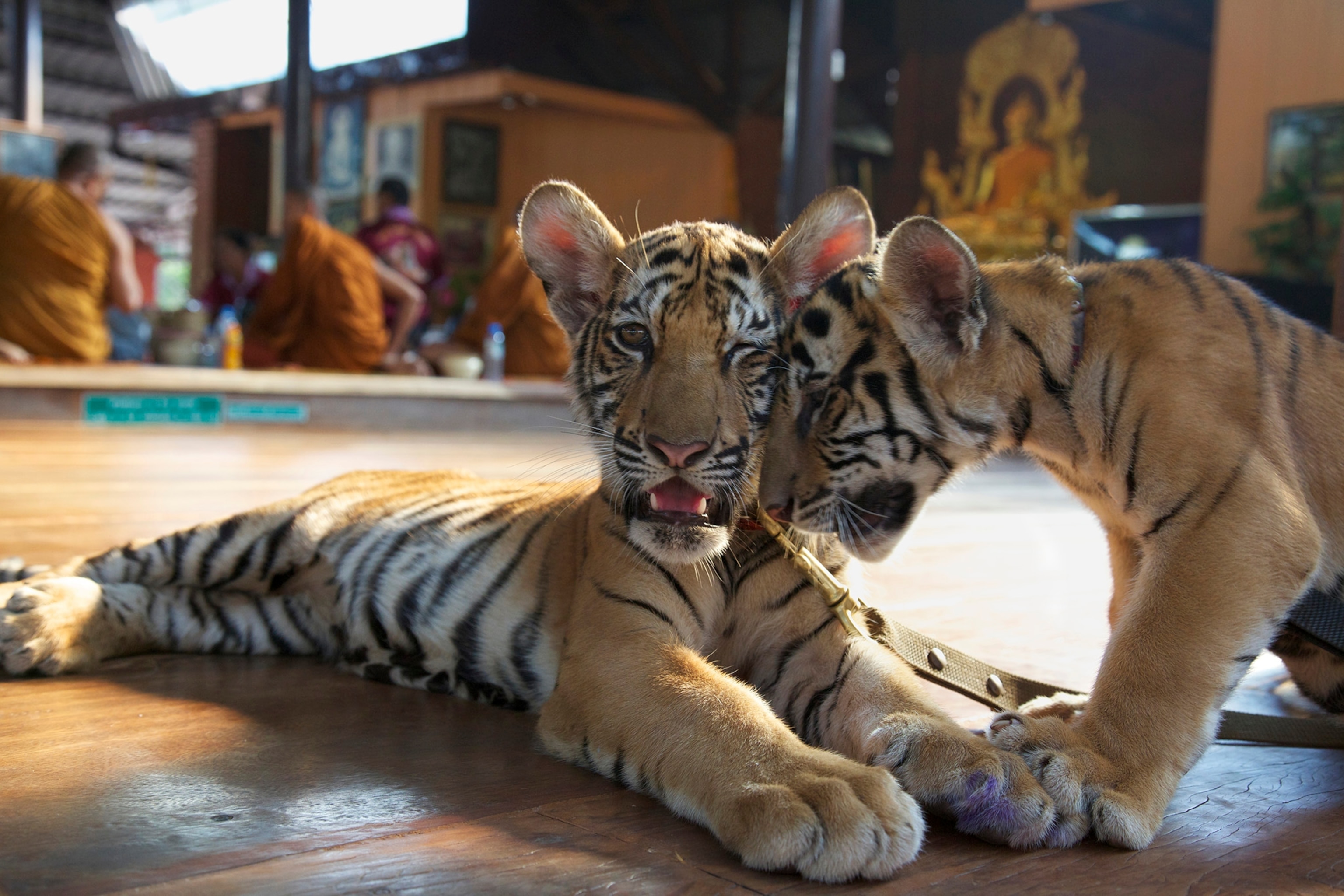
Wildlife experts say that the discoveries at the Tiger Temple have accelerated government efforts to strengthen the protocols and regulations needed to better monitor captive animal facilities and more effectively prosecute wildlife crime.
Kanita Ouithavon’s forensics lab is developing a DNA database for all of Thailand’s 2,500 captive tigers—and, eventually, for the country’s remaining wild tigers as well. The three-year project, in cooperation with the UN Development Program and the Global Environment Fund, is creating a unique genetic tag for each animal to pinpoint its origins.
“It means you cannot say this tiger came from somewhere else,” says Ross McEwing, a forensic zoologist with TRACE Wildlife Forensics Network who provides technical support to Ouithavon’s lab.
Each DNA profile costs less than $10, which is key because the tigers must be re-tested throughout their lives to ensure effective monitoring. “We’re using this as a compliance system for tiger farms,” says McEwing, but it’s also a law enforcement tool to identify the sources of tigers seized in the trade—or of tiger bones, meat, or skins.
Wiek, of Wildlife Friends Foundation Thailand, emphasizes that the database must be shared publicly to ensure transparency and prevent any tampering with the DNA records.
WHERE ARE THE TIGERS NOW?
The 147 tigers seized from the Tiger Temple are now living in government wildlife centers. Females are no longer birthing back-to-back litters, and the tigers aren’t in danger of being killed for profit. Nor are they living in unnaturally large groups or being forced to sit in the tropical sun for hours so tourists can pose with them for selfies.

But their conditions are still far from ideal: In nature tigers are wide-ranging predators that may cover many miles in a night, but these animals are confined to cages measuring about 12 by 16 feet.
Last year Four Paws, an animal welfare group based in Austria, contacted the wildlife department to propose construction of a big cat sanctuary that could house 200 animals. Four Paws offered to help design and work with the agency to jointly build this sanctuary on government land.
Such a sanctuary would allow the Tiger Temple’s animals and other confiscated or abandoned big cats to live out their days under more humane circumstances.
Sharon Guynup writes about wildlife and environmental issues and is co-author of Tigers Forever: Saving the World’s Most Endangered Big Cat. She is a public policy fellow at the Woodrow Wilson International Center for Scholars. Follow her on Twitter.
